2024 – CHW
A trip to Burncoose for the annual tree survey.
Flowers appearing already on Helleborus x sahinii ‘Winterbells’.
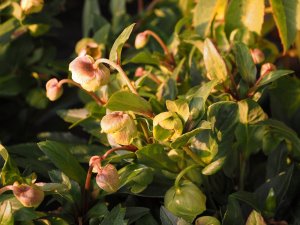
Secondary flowers and ripe seed heads on Magnolia sieboldii.
The Eucryphias at Burncoose seem later into flower than those at Caerhays. Here Eucryphia lucida ‘Pink Cloud’ by the mist houses.
Acer palmatumn ‘Senkaki’ (‘Sango-Kaku’) has autumn colour already above the mist houses.
Eucryphia x nymansensis ‘Nymansay’ still full out outside the Burncoose House Kitchen.
The best Hydrangra villosa that I have ever seen beside the Burncoose lawn.
Michelia x foggii ‘Allspice’ with secondary flowers. I have never seen this before.
Acer rubrum by the pond as good as ever.
Secondary autumn flowers on Rhododendron yakushimanum. Unreal!
Despite all the rain the pond levels are low.
One of the Hoheria sexstylosa ‘Pendula’ which David Knuceky planted along the edge of the pond.
The new planting from 2 years ago by the old walled garden has had a good growing year.
The best thing by far in the garden today was Schima khasiana. Masses of flowers high up at the top of the 41 year old tree.
2023 – CHW
The house martins, who have had an excellent breeding year are starting to migrate. The fly season will soon be upon us with a vengeance. Flooding at Exeter airport which was closed on Sunday.
Hydrangea aspera ssp. robusta just out with its enormous and readily identifiable leaves.
The Fuchsia magellanica hedge reshooting only a fortnight or so after being cut back.
A giant mushroom now on the lawn.
The first Camellia sasanqua is now full out.
The second (white) one has plenty of bud but is still some way off.
2022 – CHW
Vitex agnus castus just out below Slip Rail. It has been in bud for weeks.
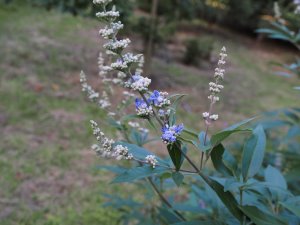
Magnolia delavayi is flowering sparsely this year which is no great surprise after the drought. Can we expect a late autumn flush of new buds? Not by the looks of it.
Hoheria sexstylosa ‘Pendula’ finally in flower rather later than all the other species as we know.
Loads of already ripe and dropping red seeds on a Magnolia laevifolia. Very early.
First seeds of that we have ever seen on Rehderodendron kweichowense (WWJ 12019). Asia to collect when eventually ripe (only a few).
Another Cercidiphyllum on Hovel Cart Road looking ghastly but it should recover. These need dappled shade and not full sun as here. A universal problem this year with this genus. The trees on the lawn at Burncoose are only marginally better.
Callicarpa psilocalyx with bud and flower still out. Only 1 of 3 has survived in a windy and cold spot but this plant has clearly grown well in the heat and full sun this year.
2021 – CHW
The annual tree survey day in Burncoose gardens.A pleasant combination of Lobelia cardinalis ‘Queen Victoria’ and Aconitum carmichaelii ‘Arendsii’.
The annual tree survey day in Burncoose gardens.A pleasant combination of Lobelia cardinalis ‘Queen Victoria’ and Aconitum carmichaelii ‘Arendsii’.
Here is another – Euphorbia characias ‘Tasmanian Tiger’ and Heuchera ‘Obsidian’.
Aster ‘Rose Crystal’ looking good.
Hoheria sextylosa ‘Pendula’ in flower with Rhaphiolepis umbellata below it right beside the nursery entrance on the A39.
Berries aplenty on Taxus baccata ‘Fastigiata’.
The little Wollemi pine which has struggled to 10ft or so in 10 to 12 years has suddenly produced a few female flower cones right at the top of a rather branchless stem.
The new bench in the large glasshouse is in position. This will be a weaner bed for rhododendrons and azaleas with no bottom heat.
These cyclamen under the yew trees by the house were always a joy in September when we lived at Burncoose.
2020 – CHW
A single seed pod on Camellia pitardii. Its first ever seed which will be well worth Asia collecting.
A single seed pod on Camellia pitardii. Its first ever seed which will be well worth Asia collecting.
Secondary flowers on Viburnum rhytidophyllum which I had not expected after such a heavy crop of flowers in the summer.
Rhododendron ‘Bowjingles’ flowering in a nursery bed. A pleasant yellow and new to us.
This is what I believe to be Lyonia ovalifolia (in Higher Quarry Nursery) which has not flowered since being knocked down by a tree. Strangely zig-zagged new growth and a nice display of bark on the old trunk which remains.
Secondary flowers on Rhododendron impeditum ‘JC Williams’ – not many perhaps but a nice surprise nonetheless.
I do not remember seeing Clematis armandii having a second flowering either.
But it is very common in Cytisus ‘Porlock’.
The last flower for this year on Romneya coulteri.
Eucomis bicolor’s flowering stems have collapsed as seed sets.
A white flowered form of Amaryllis belladonna is out below the dining room window. Should be pink ones soon too shortly.
Salvia x jamensis ‘Hot Lips’ flowers on and on into winter. An amazingly showy perennial plant with an enormous flowering season.
2019 – CHW
Cotoneaster ‘Exburyensis’ is plastered in what are becoming yellow berries which will become pink tinged later on.
Cotoneaster ‘Exburyensis’ is plastered in what are becoming yellow berries which will become pink tinged later on.
The young Magnolia insignis which flowered so well in the summer has used its energy on secondary new growth. No seed pods at all in evidence sadly.
A young Magnolia macrophylla to replace our elderly specimen which is on its last legs was planted in a very sheltered spot in the spring. It has not grown much but has certainly settled in and looks happy enough.
Zanthoxylum coreanum (or so the label says but perhaps koreanum?) is another new species to us. Here are its first unripe berries and the usual huge spikes on its trunk. Quite different in leaf to the two Zanthoxylum species in Forty Acres which we looked at last week.
Caesalpina japonica (now Caesalpina decapetala) is becoming a dense mounded shrub armed with formidable prickles. The leaves and new growth are acacia like and rather beautiful despite their spines. We have not tried growing this before but it seems perfectly hardy even if a few branches have split and collapsed. It is in full sun but we have yet to see its yellow racemes of flowers in summer. Burncoose stocks Caesalpina gilliesii but this species has larger and more attractive leaves I think.
2018 – CHW
Acer rufinerve ‘Erythrocladum’ looking very fine in the late afternoon sun. The first of the snake bark maples to turn colour properly here this year.
Acer rufinerve ‘Erythrocladum’ looking very fine in the late afternoon sun. The first of the snake bark maples to turn colour properly here this year.
Hydrangea ‘Mme. E. Mouilliere’ still with pristine new flower heads six months on from when I first photographed these earlier this year.
Fuchsia hatschbachii planted only this spring has made enormous growth and is flowering away well as a freestanding garden shrub.
Vitex agnuus castus, the chaste tree, flowering away nicely today. Six to seven feet tall with a similar spread.
2017 – CHW
Ehretia thysiflora has tertiary new growth which is impressive in a rare young plant. The new growth starts purple before fading.
Ehretia thysiflora has tertiary new growth which is impressive in a rare young plant. The new growth starts purple before fading.
Quercus laurifolia too has enjoyed the wet since August and has plenty of secondary new growth with reddish bark. A good trunk is developing. Odd we did not have this in the collection here already. It is a name I remember from 20 to 30 years ago so I guess we did and it has died.
This Salix moupinense was collected in Vietnam and a gift from Penrice Castle. Very different in leaf and habit from our other plant and the ones for sale at Burncoose. Attractive and appears to be becoming a tree rather than a bush.
Crataegus ellwangeriania ‘Fire Ball’ was a gift from Bluebell Nursery. Its fruits are now fully ripe. Enormous for a thorn tree and this one will be much admired in the future.
Tilia dasystyla was only planted this year. Collected by Bob Cheary in northern Iran. Huge leaves already which the slugs have got at. We planted half a dozen new species of lime in the spring. This one has done the best so far.
Viburnum prunifolium, the ‘black haw’ is its common name and you can readily see why! The fruits are sweet and edible. One to take to the Garden Society dinner in early October I think.
A couple of views of the middle bit of the Kennel Close planting after the third grass cut. Some 10 year old trees look as though they have been there for rather longer than this!
2016 – CHW
Some newly planted rarities (this year or last) to inspect today. Mainly bought at massive cost from Crug Farm. Rehderodendron indochinensis has made excellent growth and is hopefully away. Just as well as I paid £85 for it!
Some newly planted rarities (this year or last) to inspect today. Mainly bought at massive cost from Crug Farm. Rehderodendron indochinensis has made excellent growth and is hopefully away. Just as well as I paid £85 for it!
Rehderodendron kwangtungense has some dieback on last year’s new growth and far less new growth but the leaves are huge. It needs staking urgently.
Acer albopurpurascens – you could readily have fooled me that this is an acer like plant at all but it has three separate labels and, thankfully, is doing well.
Huodendron tibeticum is clearly dead. This is the third or fourth huodendron I have now failed with. A beautifully barked genus with very recognisable leaves which is superb at Tregrehan.
Magnolia crassifolia has established and grown well. Well sheltered here and space for it to prosper deer permitting.
2015 – CHW
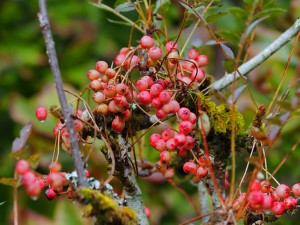
The topgrafted Sorbus reducta has produced a nice display of white flushed pink berries in small clusters on the tips of the stems. No autumn colour yet.
Crataegus x grignoniensis has huge and very bright red berries. Another topgrafted plant but extremely effective today with the sun on it. This is a hybrid of Crataegus mexicana.




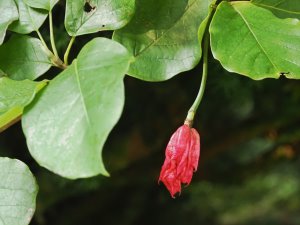
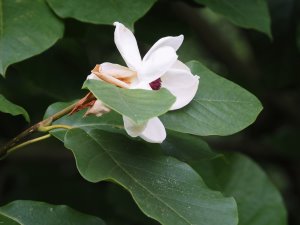
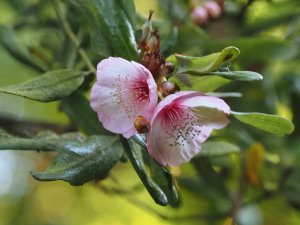
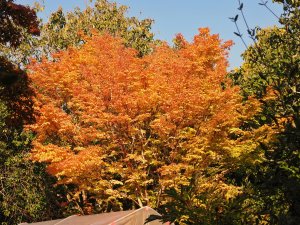
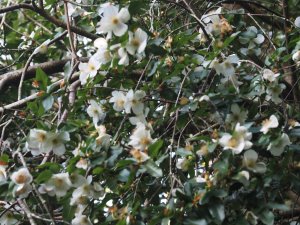
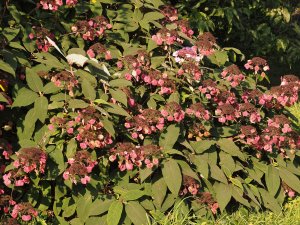
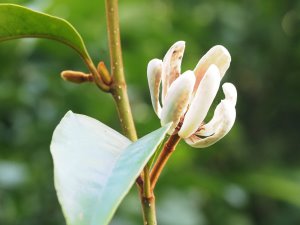
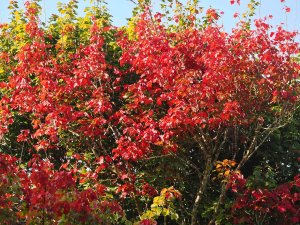
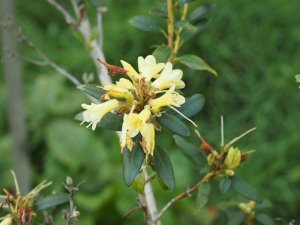
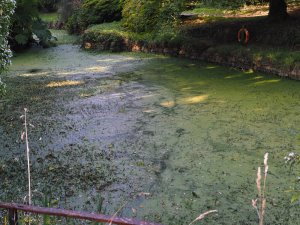
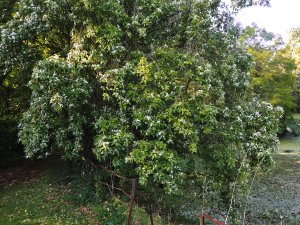
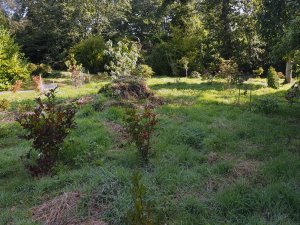
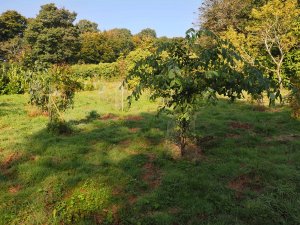
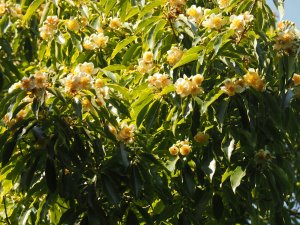
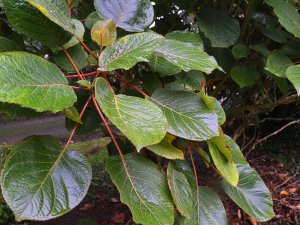
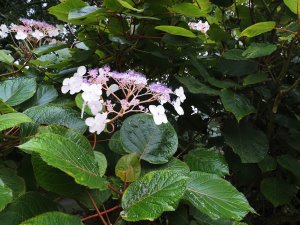
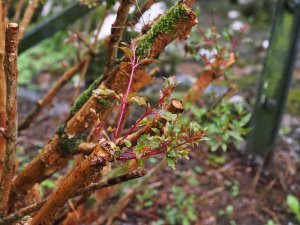
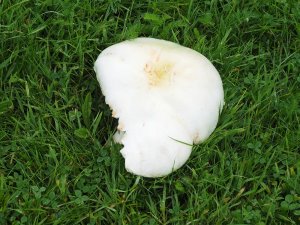
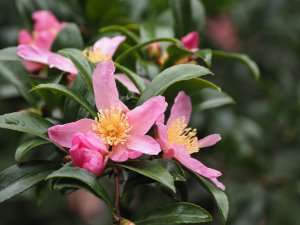
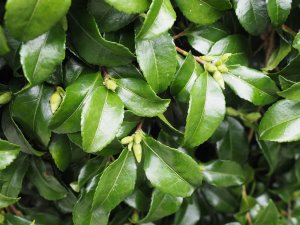
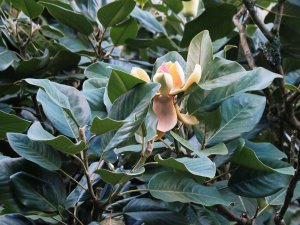

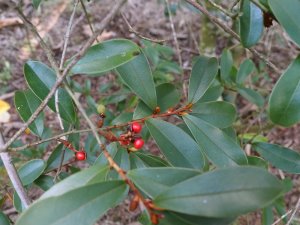
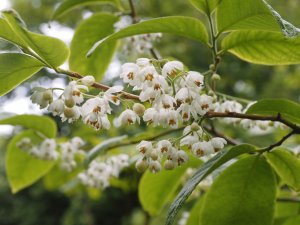
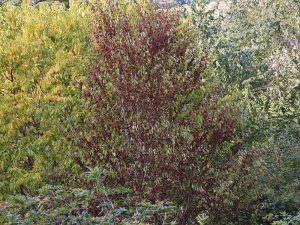
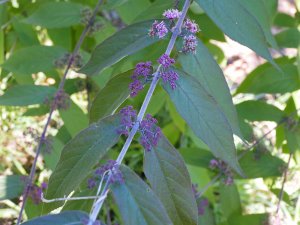
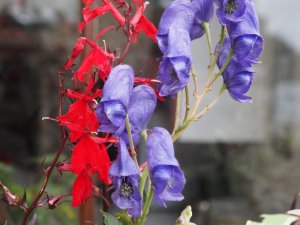
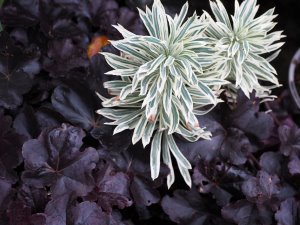
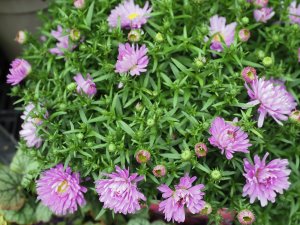
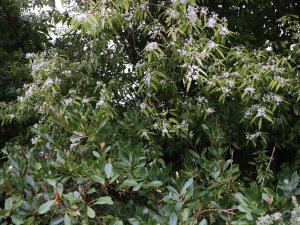
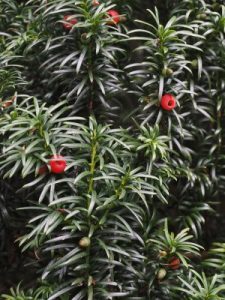
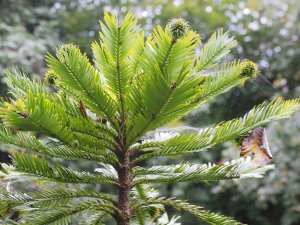
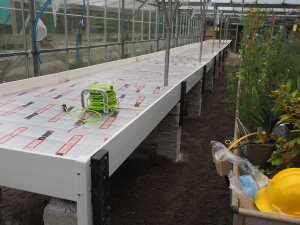
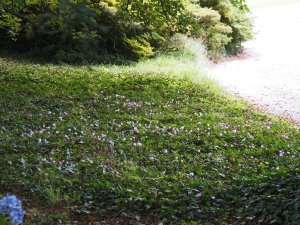
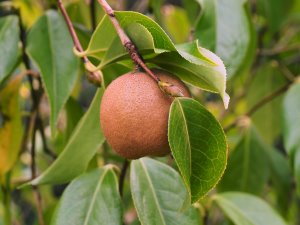
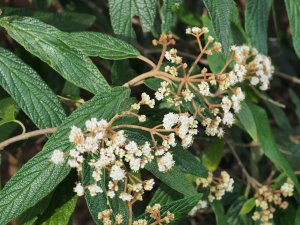
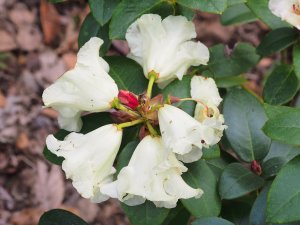
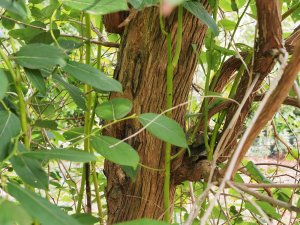
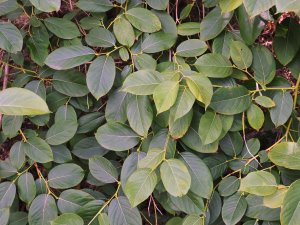
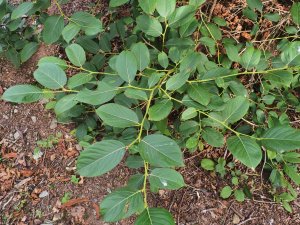
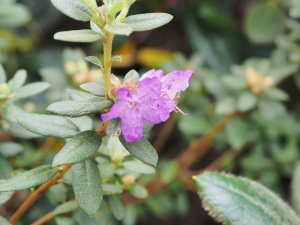
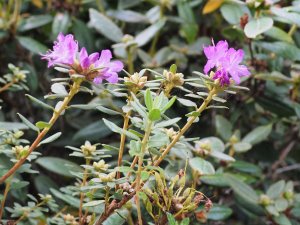
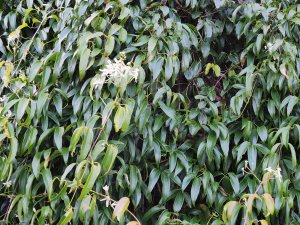
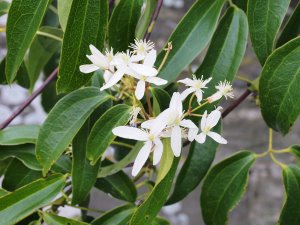
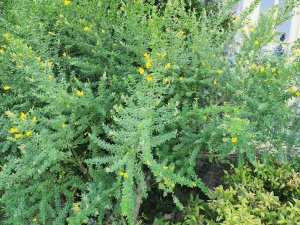
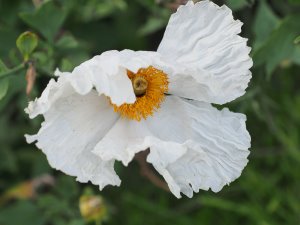
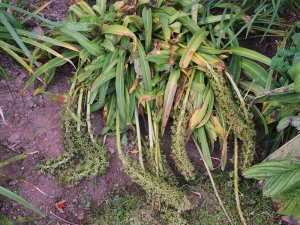
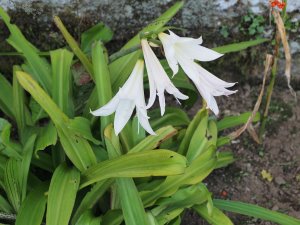
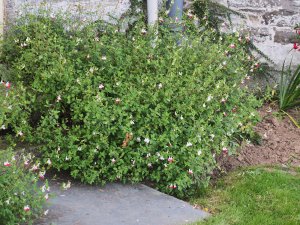
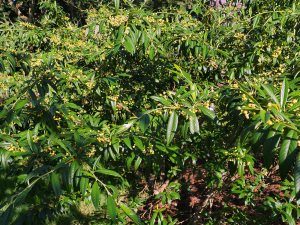
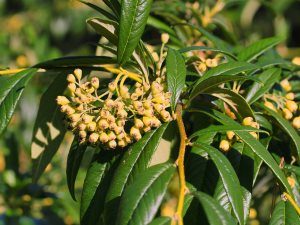
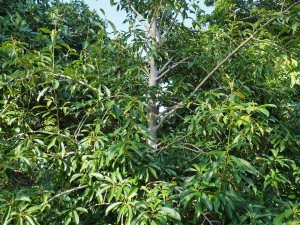
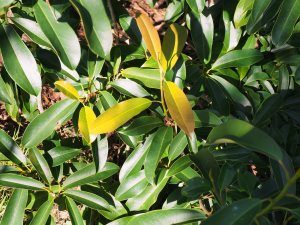
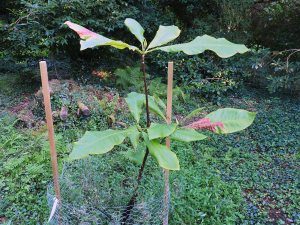
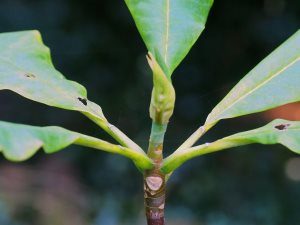
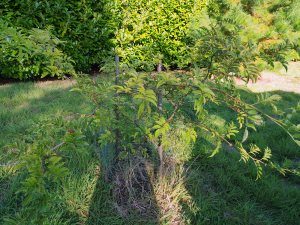
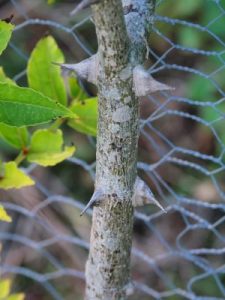
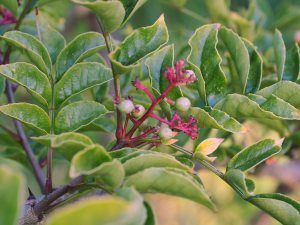
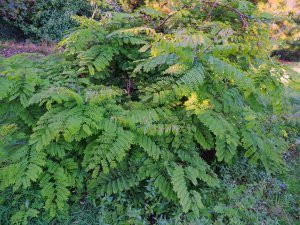
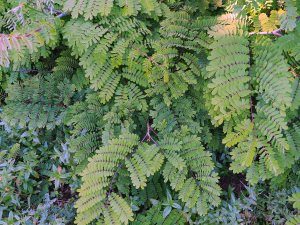
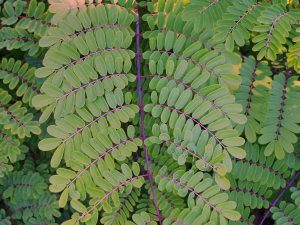
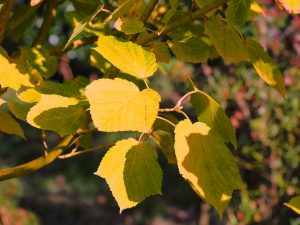
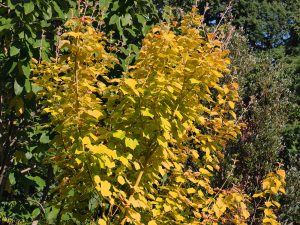
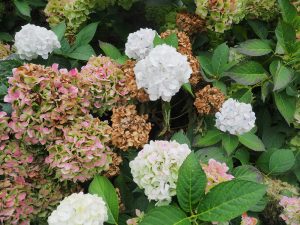
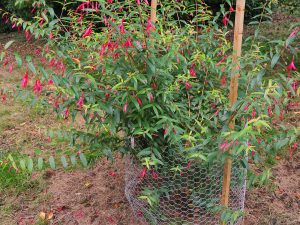
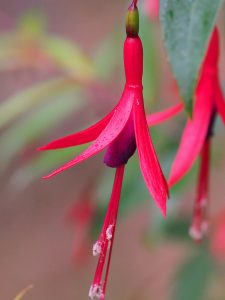
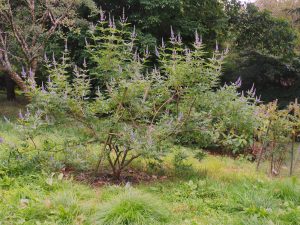
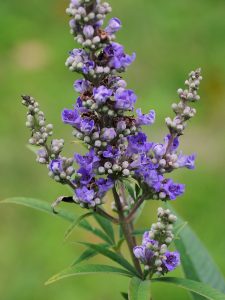
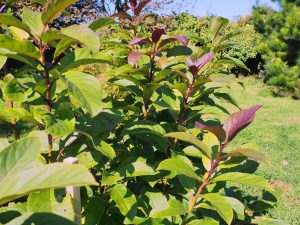
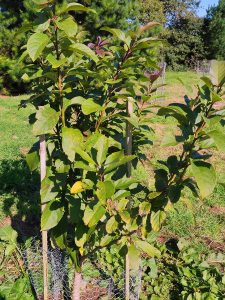
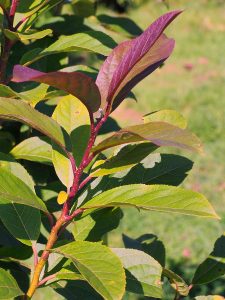
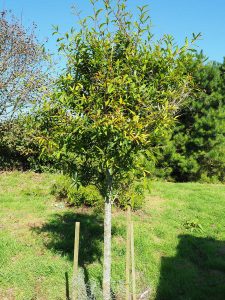
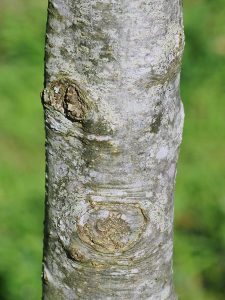
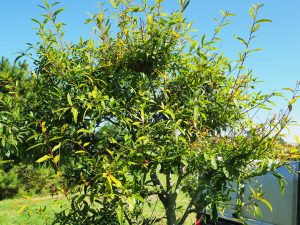
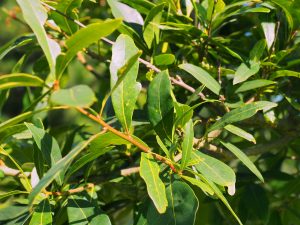
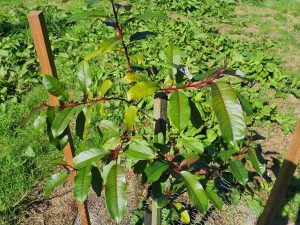
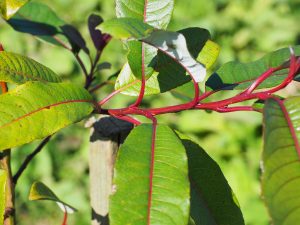
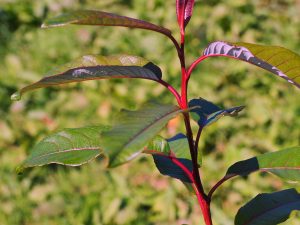
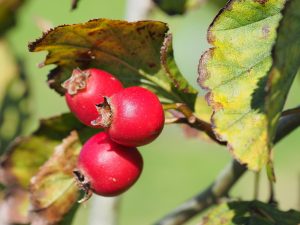
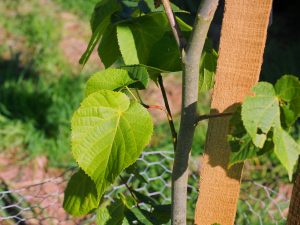
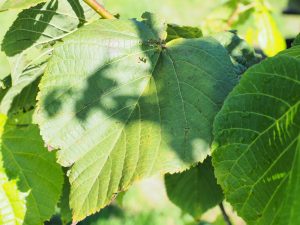
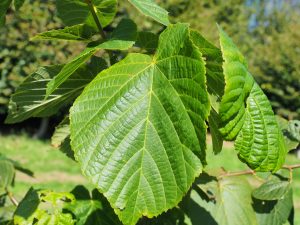
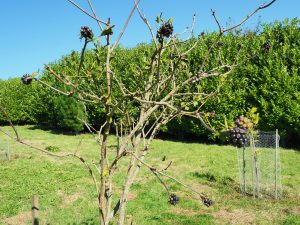
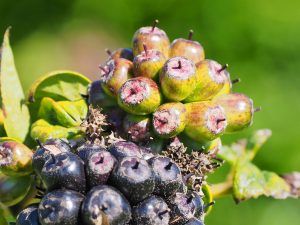
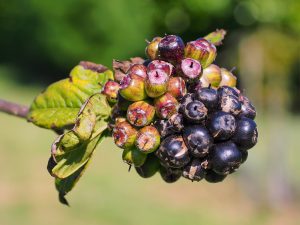
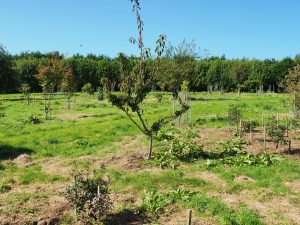
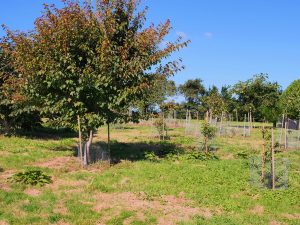
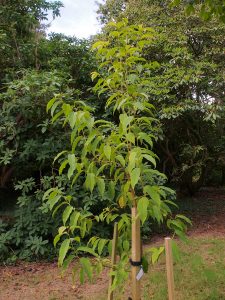
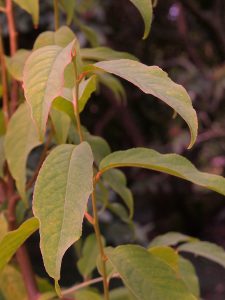
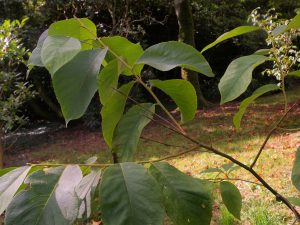
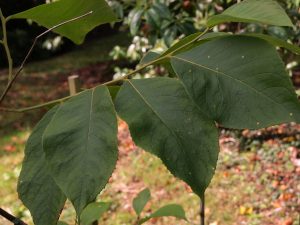
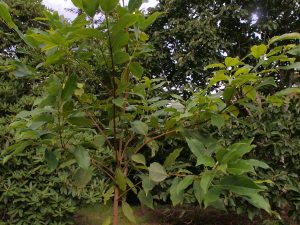
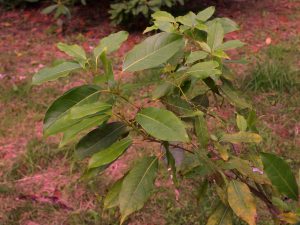
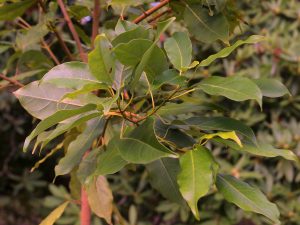
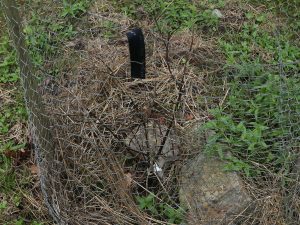
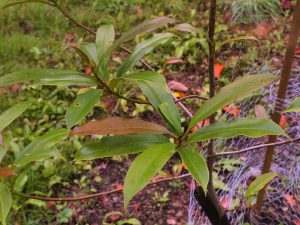
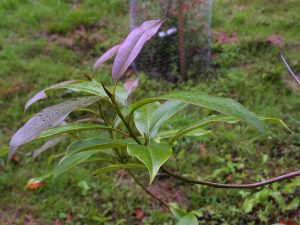
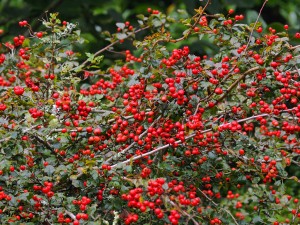
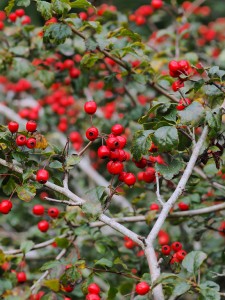
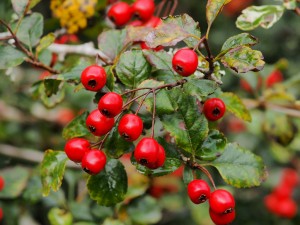
’20 The flowers might be Amaryllis, but the leaves are of something else, may be Eucommis. Amaryllis has better colour with cool nights. ’19 The Magnolia is either obovata or tripetala, as macrophylla has leaf-bases with lobes which nearly touch each other. Caesalpinia decapetala is quite hardy and can grow trailling here; but it needs heat to grow properly, up to 4-5 m a year. It flowers mostly on new growth in spring and old growth shall be cut; a nasty task with the long prickles on stems and leaves. ’17 Ehretia seems to be quite drought-resistent, as Ehretia corylifolia (a shruby sp.) in Strasbourg gew shoots of three meters without watering, other species like E. dicksonii are trees of about 8-10 meters and have plenty of fruit.